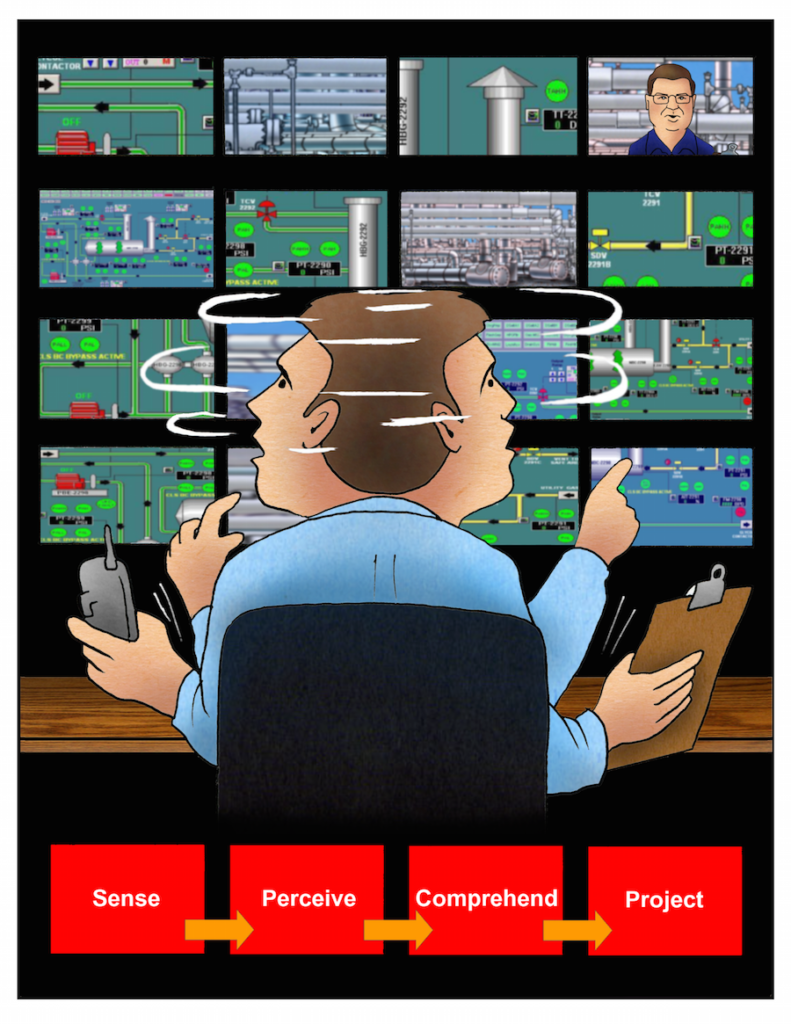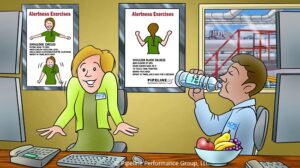The right amount of information at the right time is critical for pipeline controllers and others who are performing safety-critical tasks. In simple terms, situation awareness is being aware of what is going on around you so that you can anticipate what could happen in the future.
• In a control room, how does one become aware of what is going on?
• How does one interpret what is going on around them?
• What can be done to maintain situation awareness?
• What factors could cause situation awareness to be lost?
• How does one anticipate what could happen in the future?
Depending on your interest in situation awareness, a number of books and scientific papers are available. One book is Designing for Situation Awareness, by Dr. Mica Endsley. She suggests three questions for obtaining and using situation awareness:
1. What information do I need? (Perception)
2. What does this information mean to me? (Comprehension)
3. What do I think will happen next based on this information? (Projection)
The Control Room Management regulation states, “Provide adequate information. Each operator must provide its controllers with the information, tools, processes and procedures necessary for the controllers to carry out the roles and responsibilities the operator has defined…(195.446(c) and 192.631(c)).” The regulations then specifically mention the importance of standards for SCADA displays and a shift change procedure for transfer of responsibility and the types of information to discuss.
We become aware of what is going on through information. Information has no meaning until we instill it with meaning. Humans have to use their senses and their brains to obtain and process the provided information. In a control room, that information comes from SCADA displays, alarm systems, leak detection systems, software tools, other Control Room personnel, field and SCADA personnel, logs, checklists, procedures, change management instructions, and notifications of various kinds.
There are complicated explanations of how situation awareness works. A simple explanation is:
• People seek and gather data from available sources (sensing).
• They combine that data into meaningful information (perception), discarding the information that is not important to them at the time.
• They mentally process that information to understand what it means in a particular situation (comprehension).
• People use that understanding to think about what to do next, look into the near future, and reconsider the plan (projection).
In the 2005 “NTSB SCADA Safety Study” on page 12, the report states, “the principal issue in the SCADA-related accidents investigated by the Safety Board was the delay in a controller’s recognizing a leak and beginning efforts to reduce the effects of the leak.” If you read some of those NTSB reports, there were some situation awareness issues that contributed to the controllers’ responses or delay in responses.
Dr. Endsley points out these problems in gaining and maintaining situation awareness.
Look at the illustration on page one. The Controller has sources of information from sixteen displays. He has a phone for making and receiving calls in order to provide and receive information from other people. He may have information on the clipboard. The man in the upper right display may be able to communicate with him via a video link. Based on the illustration, information is available and there may even be danger of sensory overload. We cannot tell if the Controller correctly understands the information or if he is able to project what will happen in the future.
I believe situation awareness is an important subject for Team Resource Management (TRM) training in control rooms and with other pipeline groups. If your Company has had any DOT-reportable accidents, was a lack of situation awareness one of the causes? It is important to use lessons from specific accidents, abnormal events, or near misses since some people have difficulty learning from the mistakes of others because they mistakenly believe the same types of incidents cannot occur in their Company.
We use the NTSB accident reports in training courses because they are publicly available and the NTSB investigators do a good job of identifying human performance issues that contributed to the accident. Can you think of examples at your company where situation awareness was not maintained and an operating incident occurred? Those are learning opportunities if you have a root cause analysis technique that includes factors that affect situation awareness. Those factors might include stress, fatigue, distractions, complacency, lack of communication, or equipment failures that affected the availability of information.
I want to provide one suggestion that can help prevent situation awareness problems. It is a self-verification technique called STAR. I learned the technique from the nuclear industry, but it is used in many industries today. I saw it on a mouse pad at a doctor’s office yesterday. Humans in all safety-critical industries need to prevent errors and accidents that harm people and public safety.
• STOP – Plan the next task, pause before taking action, eliminate distractions.
• THINK – Identify the correct line, system or component; review the intended action and expected response.
• ACT – Perform the intended action.
• REVIEW – Compare the actual response to the expected response and determine that the results are what were expected.
Dr. Samuel Johnson, from the 1700s, did not know about the challenges pipeliners and others in the 2000s face from an overabundance of information. He said something that Controllers need to remember on the subject of situation awareness.
PARTS ARE NOT TO BE EXAMINED TILL THE WHOLE HAS BEEN SURVEYED.
We need to retain awareness of the overall system while paying attention to the details of particular operational tasks at the appropriate times. Regularly survey the whole and examine the parts of the system throughout the shift. That is why the Company has to provide adequate information in the right amounts at the right times.






